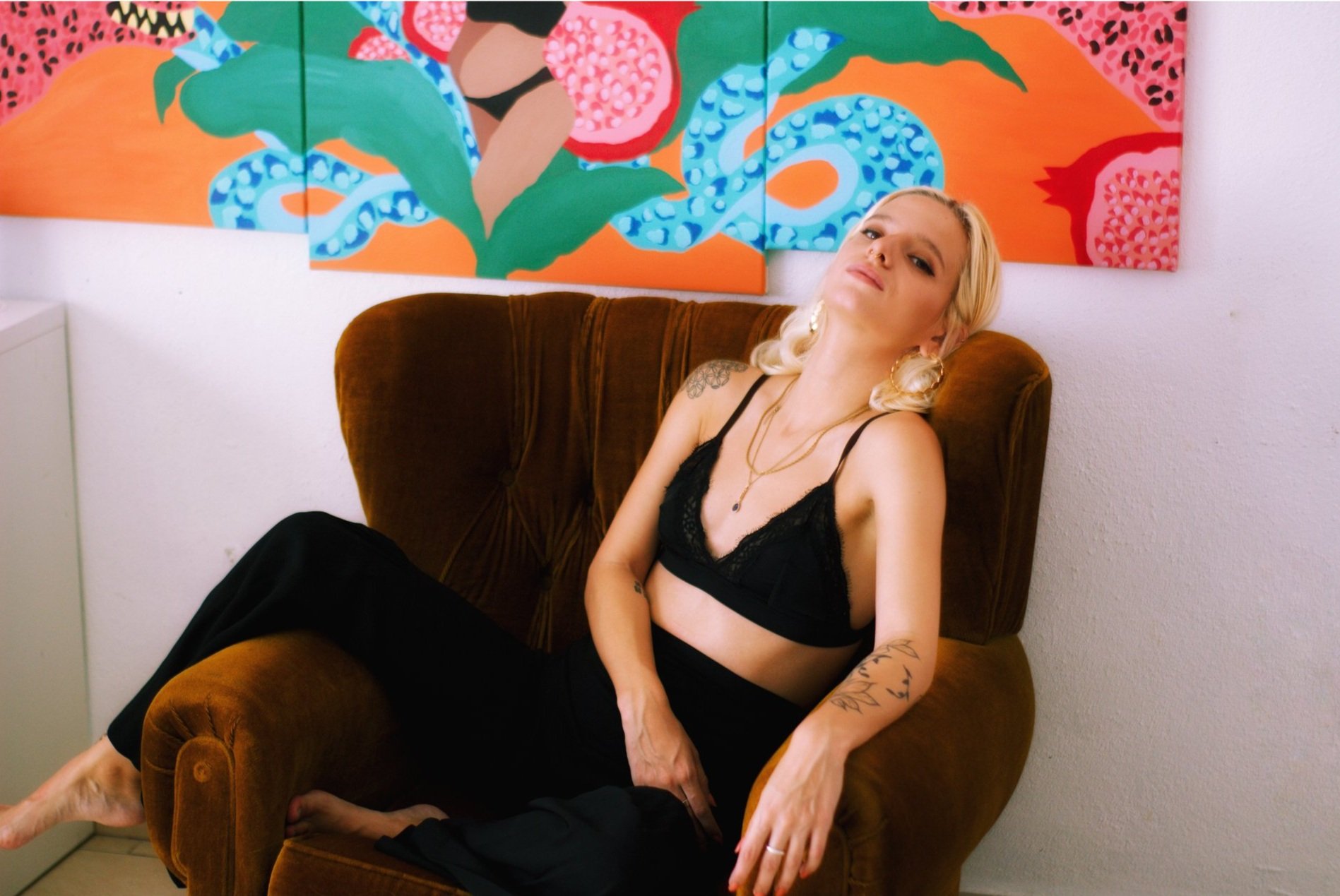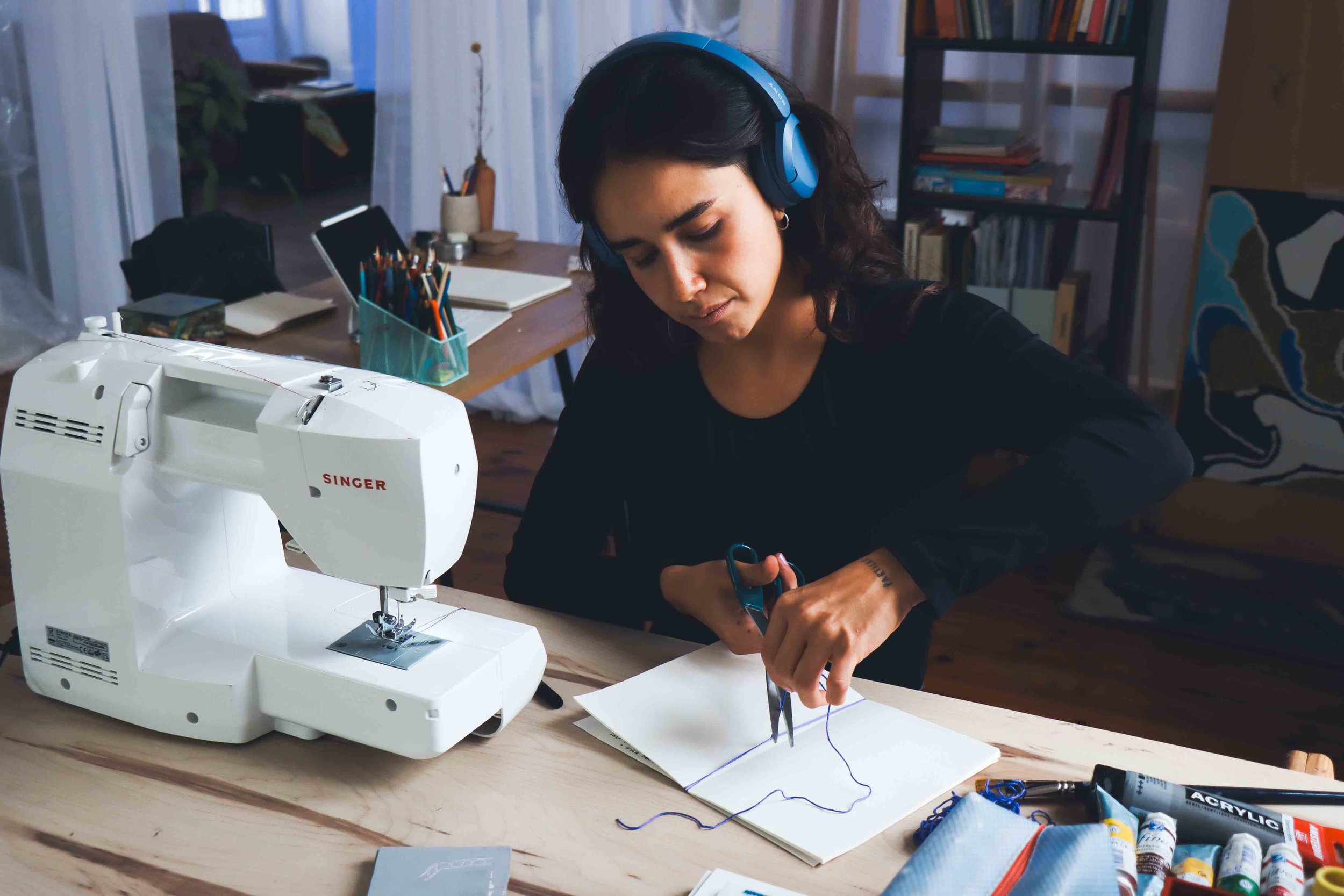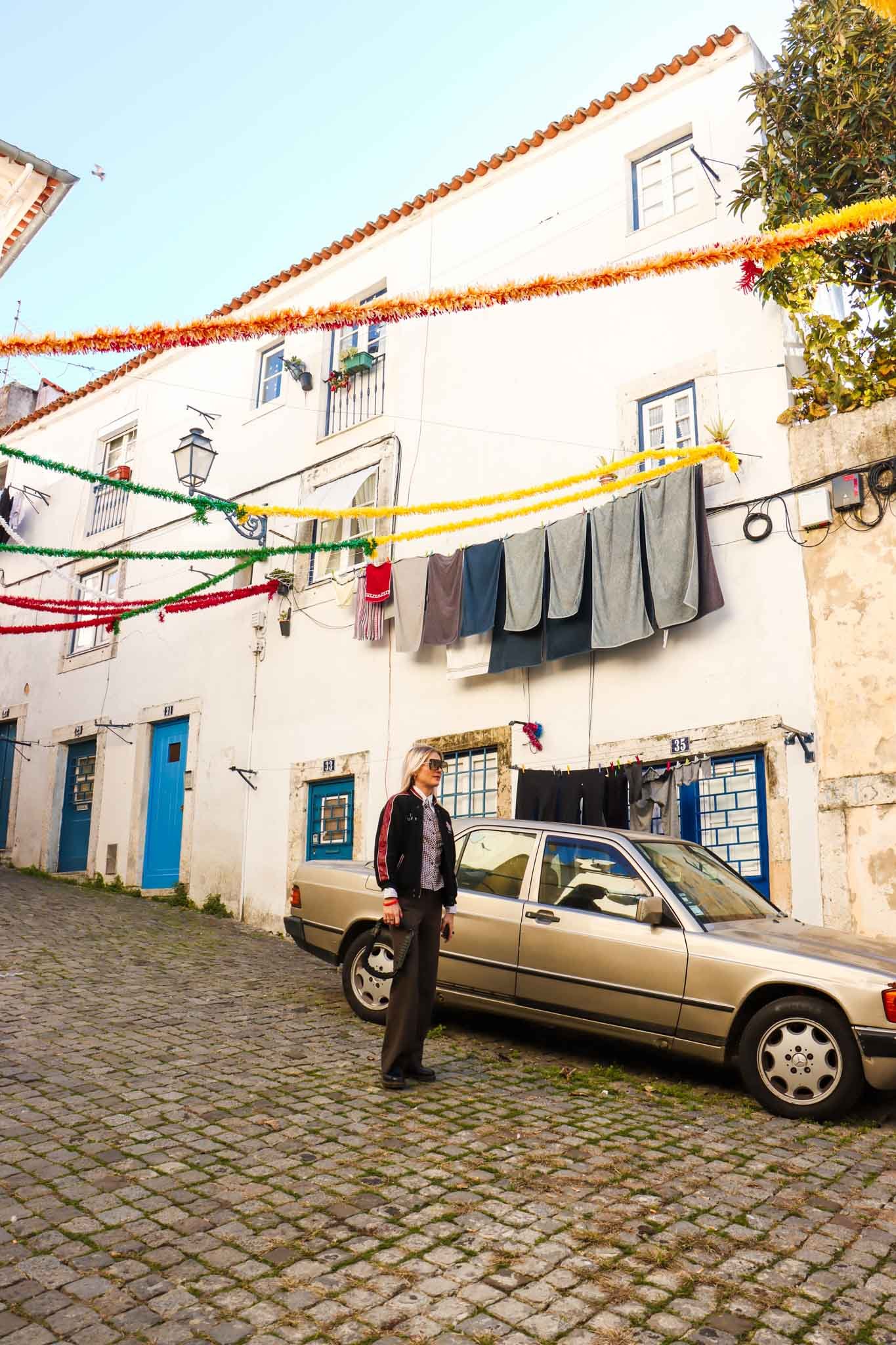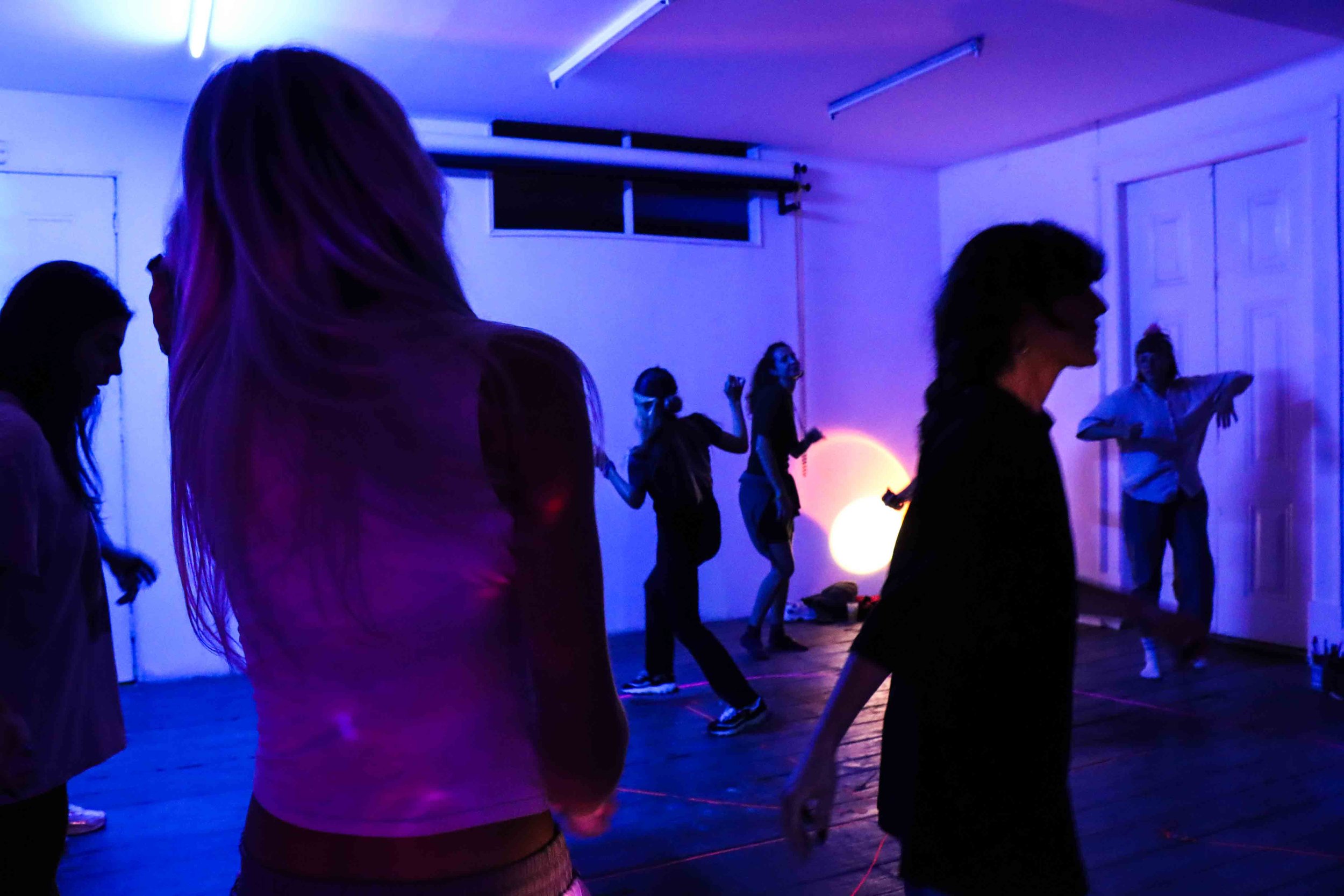IN THE STUDIO WITH DESIREE
Photo by Justice Nnanna
Desiree is an image professional working across photography, production, design, and archival spaces. A specialist in environmental portraiture, she maintains a studio practice in Lisbon, Portugal. She holds a Bachelor's degree in Visual Critical Studies with a major in Photography from the School of Visual Arts, New York.
Growing up as a third-culture child from Malaysia, Japan and the US, she combines a multicultural perspective with a deep understanding of regional visual languages. She is interested in exploring how people occupy physical spaces and, in turn, how they are nurtured by their environments.
Could you introduce yourself and your work?
I’m Desiree. I consider myself an image professional, meaning that I work across many aspects of photography – from behind the camera to online editing. I'm a visual researcher, and I consider myself a multimedia artist.
And what does the work of a visual researcher entail?
Essentially, I study photos; I research images to create a cohesive visual story. This can range from magazines, news outlets, editorials, to e-commerce brands. Sometimes the images are more playful, like for editorials or e-com, sometimes the pictorial narrative is more political, especially if I am working to visualise a writer's article – it depends on the scenario.
And what are the more political projects? That sounds interesting.
One example would be selecting images for Vanity Fair's American politics articles. At a glance, the composition of the accompanying photo must lead the viewer's eyes to the headline makers while simultaneously capturing the tone and the circumstances of the article/event. The right photo can provide context and a summary of the story.
Self-portrait by Desiree Kong
“I love finding those moments where all the lines and angles and shadows match up in a perfect composition.”
And then I want to talk about the work you do, photographing the work of other artists. It's an interesting kind of dynamic between embodying the role of the viewer while also making choices that shape how the work is seen. How do you approach that?
Documenting other people's artworks in Lisbon galleries or at the artists' studios gives me a space to kind of reengage with people through their work, and how they express themselves. It's almost like a puzzle – how do you document someone's work in the best light for the subject, or from a certain perspective within the environment? I try to piece it together. I love playing with that as a space because I definitely enjoy photographing still objects as if they were portraiture.
Why do you think you prefer photographing more still objects?
I think that it's fun to discover an angle that suits the object. I love walking in the street and finding those moments where all the lines and angles and shadows match up in a perfect composition. I feel like there is more surprise in recognising independent elements that serendipitously come together artistically. It’s constantly training your eye and your mind to take note of unexpected still instances.
And then there are the photos you take of the natural environment – I feel like there is a strong parallel with your photos of artwork because they’re both quite textural and detail-oriented. So, I wanted to ask, how do you approach nature in your photography?
I feel like, as an artist, I'm really preoccupied by how the environment shapes us, whether it be an urban space or a natural space, versus how we engage with our environment. I think that's where my travel and environmental photos come from – trying to understand or see certain behaviours and instances of how we as beings interact and behave with our environment or vice versa. Sometimes, you'll observe a tree that has been chopped above a roadway to allow buses to pass under. That, to me, is such a signifier because that tree would never be chopped like that; it's only that shape because of the roadway below. I love that play of interrelationality.
Photo by Desiree Kong; piece by Daphne Klagkou
Photo by Desiree Kong; piece from Kubik Gallery
Photo by Desiree Kong; piece ‘Impress Yourself’ by Desiree Kong
I think that's a good segue to talk more about visual cultures and how you understand different cultures through visual languages and regional visual languages. How has your upbringing and travel led to a deeper understanding of that?
When I first got into photography, I intended to become a photojournalist; then I realised that to be a photojournalist, you have to have a specific type of personality to insert yourself into cultures that you might not have a full understanding of, to be respectful in ways while still not inserting your bias so much. I don't necessarily have an outward personality that could insert myself in situations like that, to take on those photos, which is why I decided to take the path of a photo editor. That way, I can work with photographers who are better suited to be in environments like that, to photograph whatever situation that may be.
Do you think people often have a good enough understanding when they're going into that kind of work?
Actually, from the photographers that I've spoken with who cover more politically driven work, a lot of the time they have had ethical training to recognise what's acceptable in that environment; they understand that they will not have the all-encompassing knowledge of whatever culture they are injected into. I think you need to be really respectful and sensitive, and to see how people behave in front of your camera.
In terms of being behind the scenes and seeing visual language across cultures, I think there are certain behaviours that maybe are acceptable in a Western context that are less okay in a South American or an Asian context. Within those continents, each country is going to have different modes of being. It's interesting, now that I'm working with more globally inclined companies, you can see how their campaigns are going to look different in India versus in Italy, just because certain cultural dynamics don’t allow for the cross-cultural use of images.
I'm interested in this from a behavioural point of view, because even though we do so many things similarly in all of these different countries, it's interesting to see the minute differences that make us culturally diverse.
Photo by Desiree Kong
Is that something that's always interested you?
Yes, I think that's definitely something that's always interested me as someone constantly searching for belonging. I consider myself to be a third-culture kid because of my upbringing. My father is Malaysian Chinese, which is already complicated territory because we’re 4th generation Malaysian, but ethnically Chinese. And then my mom's White American, but she was raised by immigrant parents who came from Eastern Europe, so that adds another layer of complexity. Then, I spent much of my youth in Japan and in the Japanese school system, which I really have no major identification with, but because Japanese is the other main language that I speak, it confused me. And now I live in Lisbon.
I feel like I was always searching for belonging within media, and I think film, art, and photos really offered me different interpretations of how I can participate in the world. So in some ways, I do think that it's been a continuous preoccupation.
Yeah, it makes sense, and I guess it goes back to what you were saying about looking at photos that connect you to your environment. So, while you're searching for belonging, that makes sense that you’d be interested in how people are engaging with their physical spaces and environment.
Yeah, totally, and where that behaviour starts. I always think, ‘Is it actually nurture or nature?’. Certain things are definitely nature, but a lot of it is nurture. The environment really nurtures you on many levels.
Photo by Desiree Kong
Photo by Desiree Kong
I thought we could talk about your new project, Hikkoshi Archives. Can you tell me a bit about that and where that came from?
I've been a collector of sentimental objects all my life and am ready to share and circulate these articles and objects further. I have my memorabilia displaced in at least five different locations; I'm sure a lot of us do. Hikkoshi Archives is basically a way for me to document all of the meaningful belongings I've collected in different places. So, I want to photograph the objects I've already collected and then release them out into the world.
It's called ‘Hikkoshi’ because I don't see it as a thing that will exist only in Portugal. I hope to be able to do versions of sharing physical objects in other places where all of my belongings are scattered.
And which places are your possessions scattered in?
Where family and friends are, and where I have history in Malaysia and the east and west coasts of the United States… and now here in Lisbon too.
I feel that. I definitely get a bit disconnected from my possessions, but I value the ones that I know are there, that are really special to me, but which I don't have physical access to. So I like that idea of documenting them to preserve them better.
I wanted to ask you about the word Hikkoshi and what it means. How does it pertain to moving or relocation?
Hikkoshi means moving, or more literally, ‘picking things up and moving them’. I've done that so many times in my life, and I know that people relate to this as well. I think we're in a moment where a lot of us are migrating constantly for various reasons. I just wanted to call attention to that, because I know that it'll always be continuous in my life, and so this project offers me an umbrella, a shelter of sorts, under which to ‘house’ memories of my mobile way of life. I'm really interested in nomadic lifestyles. I have friends who have started galleries that basically operate in this way, where they have no settled location, and, as someone who thinks about belonging and home often, I realise that it can’t be a location anymore. It just doesn't operate like that for me, so I wanted to give an ode to that, almost as a way to reaffirm myself that it's okay to live like this.
Photo by Desiree Kong
“As someone who thinks about belonging and home often, I realise that it can’t be a location anymore. It just doesn't operate like that for me, so I wanted to give an ode to that, almost as a way to reaffirm myself that it's okay to live like this.”
I think it's such a beautiful idea. And is the idea then to share that with other people – you mentioned sharing before, what form does that take for you?
Yes, I mean, it's a way for me to document my objects, but also to allow other people to have a story with them. I know I could continuously be collecting things for myself, but it's just not sustainable. So it would basically be nice to rehouse them, and this is the format in which I would have other people view them, and hopefully take something home with them to give the objects a renewed life.
So it's the passing on of objects you've collected?
Yeah. And as I'm travelling, I collect things, and sometimes they’re not necessarily in my style, but I also realise I can't let them go. So then I will take the thing with me, and then maybe it could be housed with somebody else. It gives me a mode to collect.
Photo by Desiree Kong; riso prints by Desiree Kong
What are you excited about right now? Is there anything that's coming up for you?
I'm having a hard time focusing on just a singular thing, and I think a lot of us also operate on multitudes. Something that I've been more quietly working on that I’m trying to share more of is that I'm going to start doing artist walks and sharing certain spots or ways of travelling that I like to do when I'm in new places. When I go into a new city, I have certain things that I look for, which are bookstores, vintage stores, great food, just more local things. I'm excited to share artist walks, and I also make maps that go along with these artist walks under the name Mei Wans World. I'm excited to share more about that.
There’s definitely a singular thread running through your work, all about relating to your environment.
Yeah. I mean, even photographing other people's artwork, that's not something that I've done really previously before coming to Lisbon. I think it was really out of necessity of connecting with the community that I didn't really have access to; it gave me access to relating to people. That's why I picked up the camera again – to find a way to integrate with the community that I felt distant from, that I also wanted to be a part of, and basically to offer some sort of value to.
Photo by Desiree Kong
Photo by Desiree Kong
“This project offers me an umbrella, a shelter of sorts, under which to ‘house’ memories of my mobile way of life.”
































